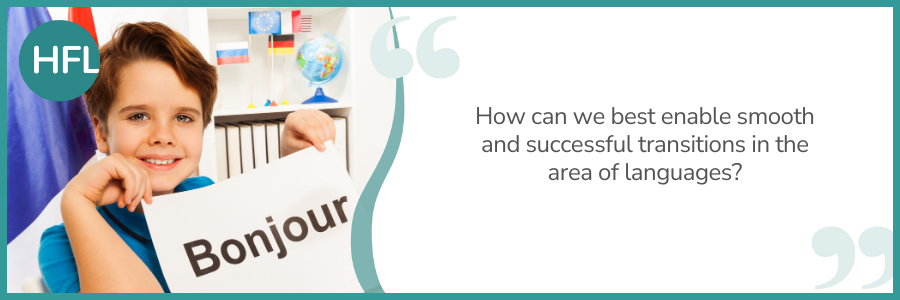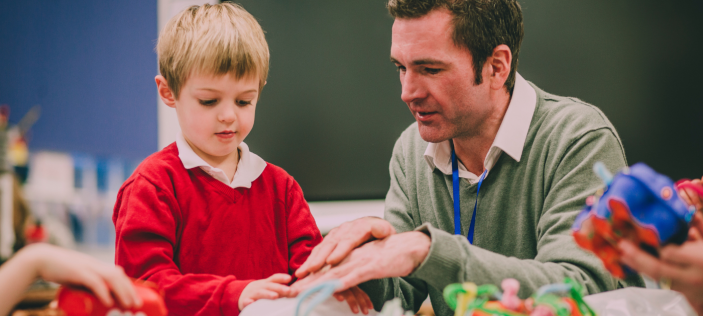
Now that the second half of the summer term is well underway, thoughts will inevitably turn to preparing Year 6 pupils for life at secondary school, both emotionally and academically.
Both primary and secondary schools are well-versed in how to support children and prepare them for transition. We think carefully about the changes to come and how we can best enable pupils to feel confident and resilient as they embark on a new and exciting, but potentially daunting, chapter of their education.
Many subjects studied continue with the same name. PE, art, history and maths for example, are all taught at primary and will still have the same subject name at secondary school.
This is not always the case for languages. Primary schools will have selected the language (any modern or ancient foreign language can be taught in Key Stage 2) that their children will learn across the Key Stage and that they will make substantial progress in. This is a school-level choice which will be influenced by a range of factors. Similarly, secondary schools will decide which language pupils begin with when they start in Year 7. As a result, the language studied by pupils may change at the point of transfer.
As for any curriculum subject, key to successful transition is continuity of learning and development. The Ofsted Research Review Series: Languages (see section ‘Enabling Languages to Flourish’) highlights the negative impact on motivation and attitudes to language learning in the secondary phase where transition is not effective. This can be because pupils feel as if they are ‘starting again’ in a language in Year 7 because previous learning is unacknowledged, or because they can’t see how what they have learned in one language can contribute to learning another.
Where pupils continue to study the same language in the secondary phase, curriculum continuity is important for effective transition. This requires communication between feeder and destination schools so that there is clarity about content that has been covered and how this can be built on to avoid demotivation.
However, successful transition does not have to be dependent on studying the same language in both primary and secondary phase. It can be enabled by being clear about the knowledge and skills that are applicable across languages and highlighting these to both staff and pupils. Clarifying this means that, even if the language being learned changes, pupils can still build on prior learning.
For example, some of the commonalities between languages often taught at both KS2 and KS3 include:
- The gender of nouns
- The impact that this has on other groups of words, (e.g., determiners)
- Formal and informal ‘you’
These are some examples of the components of knowledge and understanding which are a feature of some of the most commonly taught languages in the primary and secondary phase.
We also know that there are times when a lack of effective transition (for example between year groups) can impact negatively on learner experience within in the primary phase. The Research Review (see ‘Curriculum choices, transition’) reports that ‘poor transition, namely lack of continuity of the curriculum, is likely to be the most significant aspect in pupils not seeing the benefit of learning a language at primary school.’ Pupils themselves need to understand how the knowledge and skills acquired are applicable and transferable to the study of a new language to value their learning.
So, what is it, within our curriculum mapping for languages and our handover between teachers, that could be further strengthened to ensure that children enjoy a smooth progression in languages learning both within and between schools?
At its heart there are core elements which include:
- An identifiable core grammar that is sequenced so that it builds on prior learning
- A core vocabulary made up of high-frequency/highly transferable language as well as well as words linked to the themes being studied
- Key sound-spelling correspondences for the language being learned
Subject Leaders might find ASCL’s KS2/KS3 MFL transition toolkits a practical, workable tool to support effective transition. Available for French, German, Spanish and Chinese, they can be used to identify prior learning, avoiding as far as possible any downturn in pupil achievement or motivation as they move into the secondary phase.
Find them here: French, German, Spanish and Chinese.
HFL Education are happy to support both primary and secondary schools with their languages / MFL provision, including developing and reviewing schemes of learning, support with curriculum design, and developing teaching and learning activities that can strengthen and enhance transition. We offer in-school, bespoke consultancy, training courses and support for subject leaders.
For further advice and guidance, including on KS2/KS3 language / MFL curriculum and transition, contact Yvonne.Kennedy@hfleducation.org


